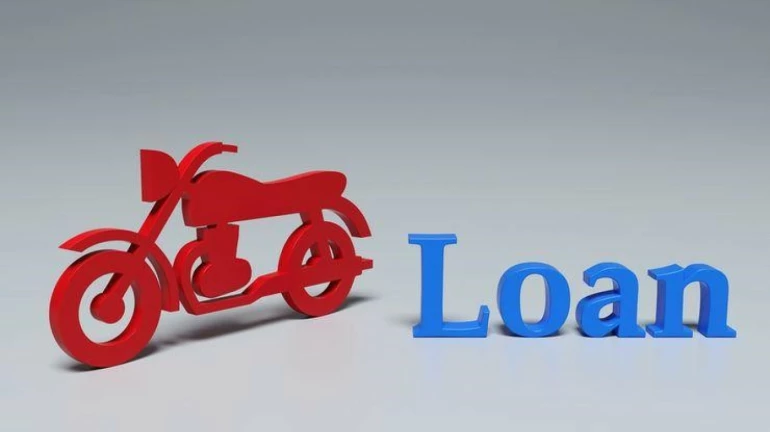
Owning a two-wheeler in India offers a convenient and cost-effective means of transportation, especially in crowded cities and towns. While many people aspire to own a new bike, the reality is that second-hand or used bikes are often more affordable. To make the purchase of a pre-owned bike even more accessible, financial institutions offer second-hand bike loans. In this article, we will explore the advantages and disadvantages of opting for a second-hand bike loan in India, along with the essential documents required for bike loan approval.
1. Affordability:
One of the primary advantages of opting for a second-hand bike loan is affordability. Used bikes are typically more budget-friendly than brand-new ones, making them an attractive option for individuals with limited financial resources.
2. Lower Depreciation:
New vehicles depreciate rapidly in the first few years of ownership. By choosing a second-hand bike, you can avoid the steep depreciation that new bike owners experience. This means your bike's value won't drop as dramatically, and you won't lose as much money if you decide to sell it in the future.
3. Lower Insurance Costs:
Insurance premiums for used bikes are generally lower compared to new ones. This can result in significant savings over the years, helping you keep your overall ownership costs in check.
4. Reduced Loan Amount:
Since the cost of a used bike is lower, the loan amount required for its purchase is also reduced. This means you'll need to borrow less, which can lead to lower monthly EMIs and a quicker repayment period.
5. Wide Variety of Options:
The second-hand bike market offers a wide variety of makes and models, allowing you to choose from a range of options that fit your preferences and budget. You can even consider premium brands that might be unaffordable when new.
6. Faster Loan Approval:
Second-hand bike loans often have a quicker approval process compared to new bike loans. Financial institutions may require less stringent documentation and evaluation, enabling you to get on the road sooner.
1. Limited Warranty:
When you purchase a new bike, it typically comes with a manufacturer's warranty that covers repairs and replacements for a certain period. With a second-hand bike, this warranty may have expired or may not be transferable, leaving you responsible for repair costs.
2. Uncertainty of Bike Condition:
Unlike a new bike, a used bike may have mechanical issues or require more frequent maintenance. It's essential to thoroughly inspect the bike's condition and history to avoid unexpected repair costs.
3. Higher Interest Rates:
Second-hand bike loans often come with higher interest rates compared to new bike loans. This is because financial institutions perceive used bikes as riskier investments. Be prepared for slightly higher EMIs due to these interest rates.
4. Limited Loan Tenure:
The tenure for second-hand bike loans is usually shorter than that for new bike loans. This means you may have to repay the loan in a shorter period, potentially resulting in higher EMIs.
5. Lower Loan-to-value (LTV) Ratio:
Financial institutions may offer a lower LTV ratio for second-hand bike loans, meaning you may need to provide a higher down payment upfront. This can be a challenge for those with limited savings.
6. Limited Choice of Features:
Second-hand bikes may lack the latest features and technology that newer models offer. If you have specific preferences or require the latest safety and comfort features, you may need to compromise when opting for a used bike.
To secure a second-hand bike loan in India, you'll need to provide specific documents. These documents are essential for the loan approval process and may vary slightly from one financial institution to another. Here's a list of the typical documents required for a bike loan:
1. Identity Proof:
- Aadhar Card
- Passport
- Voter ID
- PAN Card
- Driver's License
2. Address Proof:
- Utility bills (electricity, water, gas)
- Rental agreement
- Passport
- Voter ID
- Aadhar Card
3. Income Proof:
- Salary slips (for salaried individuals)
- Income tax returns (ITR)
- Bank statements (for self-employed individuals)
4. Age Proof:
- Birth certificate
- Passport
- 10th-grade mark sheet
5. Employment Proof:
- Employment certificate (for salaried individuals)
- Business registration documents (for self-employed individuals)
6. Loan Application Form:
Complete the loan application form provided by the lender with accurate details about yourself, the bike, and the loan amount.
7. Photographs:
Passport-sized photographs of the applicant.
8. Bank Statements:
Provide bank statements to establish your financial stability and repayment capacity.
9. Vehicle Documents:
For a used bike, ensure you have the necessary documents, including the registration certificate (RC), insurance, pollution certificate, and NOC (if applicable).
10. Income Tax Returns (ITR):
Self-employed individuals may need to submit their ITR for the previous financial year as proof of income.
11. Loan Agreement and Repayment Schedule:
Review and sign the loan agreement and understand the repayment schedule, including EMIs and interest rates.
Securing a second-hand bike loan in India offers numerous benefits, especially in terms of affordability and a wider range of options. However, it's crucial to be aware of the potential downsides, such as higher interest rates and limited warranties, when opting for a used bike. Before applying for a second-hand bike loan, carefully assess your financial situation, inspect the bike's condition, and thoroughly review the loan terms and conditions.
Remember that the documents required for bike loan approval play a crucial role in the loan application process. Ensure you have all the necessary documents ready to expedite the process and increase your chances of loan approval. By making informed decisions and being prepared, you can enjoy the convenience and freedom of riding your own two-wheeler without straining the finances.





